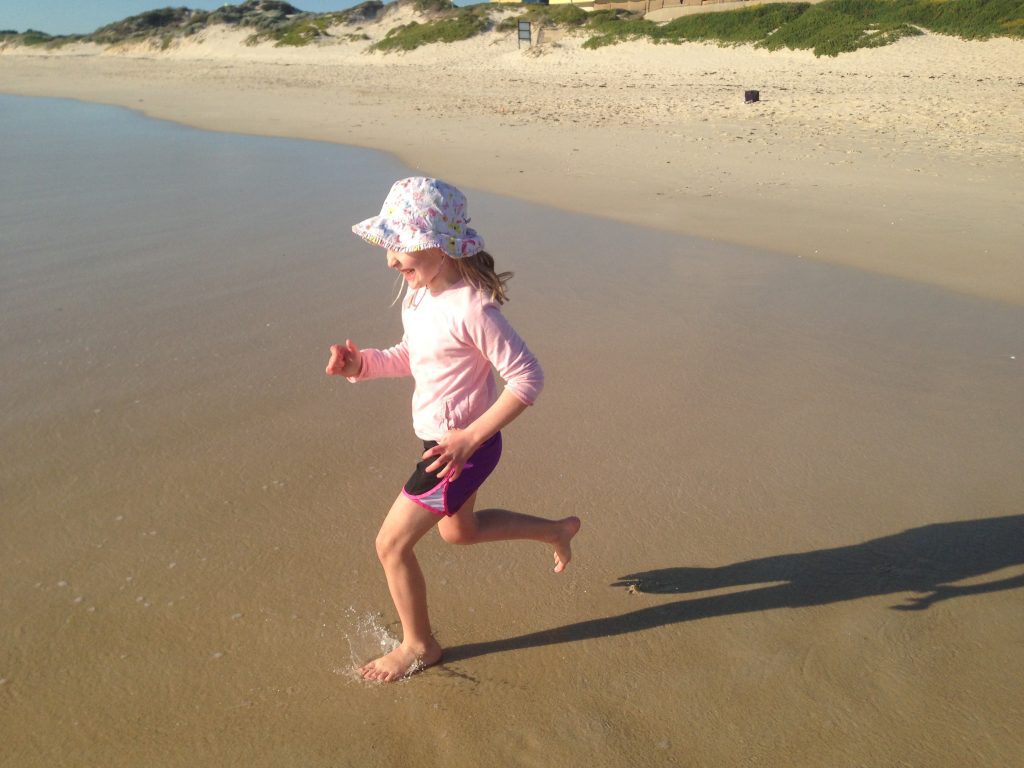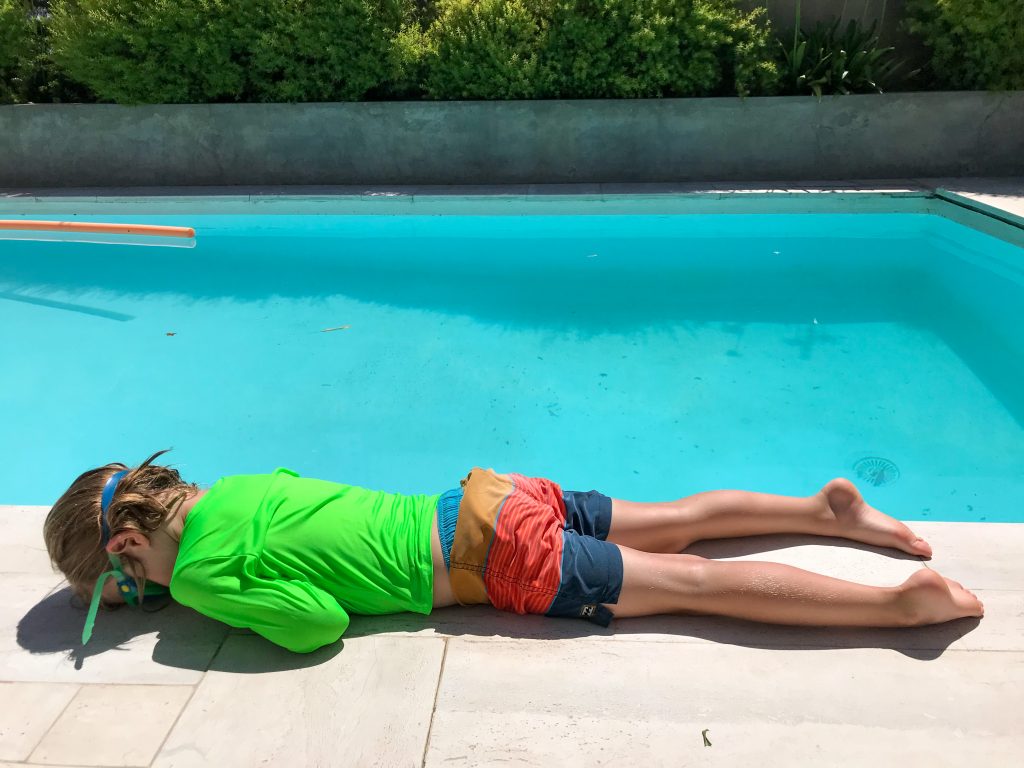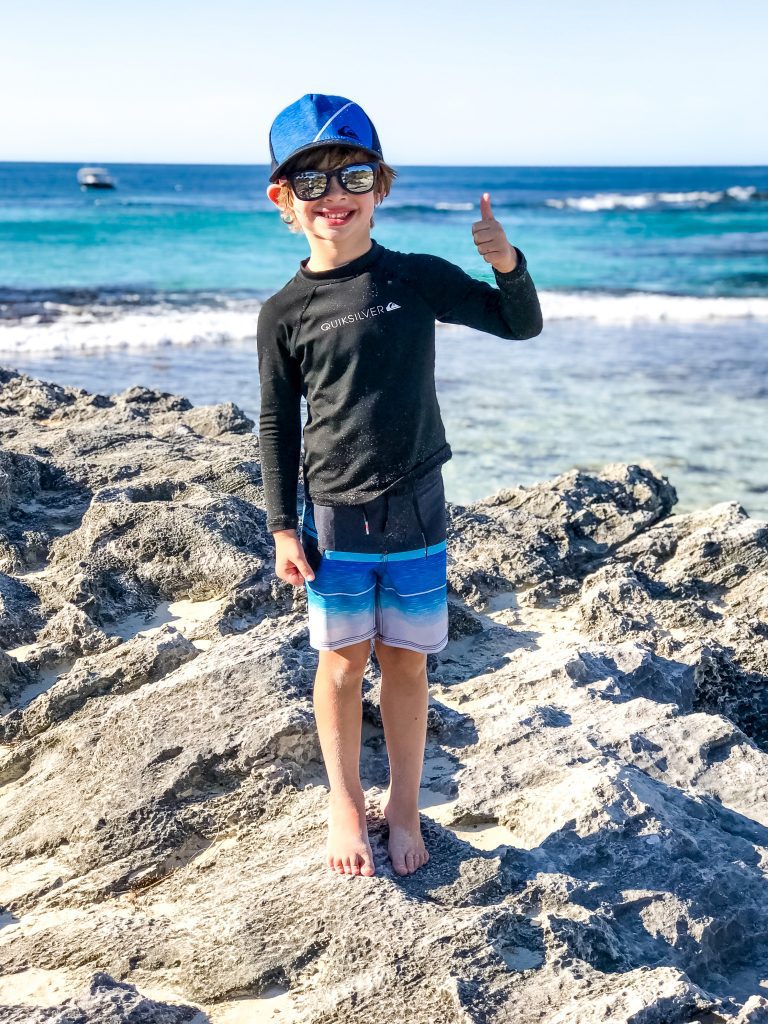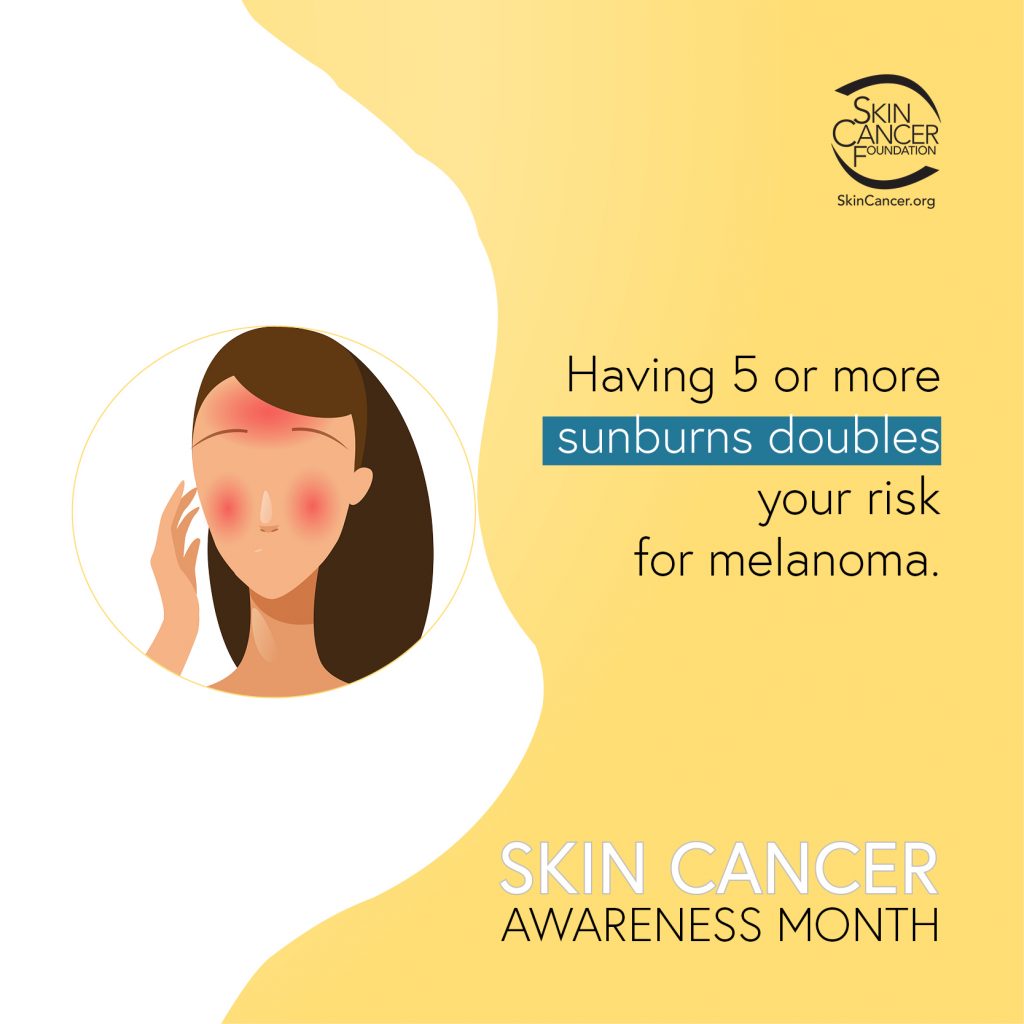According to the Skin Cancer Foundation, more than 5 million people in the U.S. are diagnosed with skin cancer each year, which is more than all other cancers combined. Harmful ultraviolet {UV} exposure from the sun causes most skin cancers, but thankfully, prevention is possible. Since May is Skin Cancer Awareness Month and the unofficial start of summer, it seems like a great time to brush up on sun smart habits.
 It’s Personal
It’s Personal
Five of my friends have had skin cancers removed in the past year. Five. Five people I talk to regularly, not five “Facebook Friends” that aren’t my friends in real life.
I am thankful that they caught the skin cancers before they proved catastrophic. I am thankful that they had Mohs surgery instead of multiple rounds of chemotherapy and radiation. I am thankful that due to early detection, I can still talk to them.
So, Where Do I Start?
 Ideally, with these seven tips.
Ideally, with these seven tips.
1. Use good quality sunscreen. And use it often.
We should all be wearing a sunscreen with a Sun Protection Factor {SPF} of at least 15 daily. The sun causes premature aging and skin damage, and most everyone has some level of sun exposure every day. {Think of going to check the mail, walking the dog, walking to/from your vehicle, or even the sun exposure you receive from an open window or sunroof while driving.} Many anti-aging facial creams now contain SPF for this very reason.
Anytime that you are aware that the sun is out and you know you will be outside for more than 15 minutes {sporting events, beach days, park plays, picnics, etc.}, you should apply a sunscreen that provides UVA/UVB protection and has an SPF of 30 or higher. It should be applied 30 minutes prior to your sun exposure, so your skin can absorb it properly. And probably the most important thing to remember is to reapply it every two hours. It does not last forever, even if it is SPF 60.
The only exception to this is that babies under 6 months of age should not wear sunscreen. They should also not have prolonged sun exposure.
All sunscreens are not created equally. My family has sensitive skin, so we choose ours carefully to avoid negative reactions.
Physical sunscreens block UV rays from penetrating skin and contain titanium dioxide and zinc oxide. Chemical sunscreens contain ingredients most of us cannot pronounce that absorb the UV rays before they reach our skin. They both are safe to use and help to prevent sun damage.
Spray and foam style sunscreens are great for quick applications. They are not great for your face though, so a zinc stick or a lotion-based sunscreen is still best for that area. If you or your children have ever gotten sunscreen sprayed in your eyes, you know why I recommend avoiding it.
2. Wear sunglasses.

Since most people are not applying sunscreen super close to their eyes, eyelid skin cancers account for 5-10 percent of all skin cancers. Your best line of defense is to wear sunglasses daily the block harmful UVA/UVB rays. Look for sunglasses labeled as providing sun protection, as not all of them block UV rays.
When it comes to your eyes, sun exposure causes more problems than just skin cancer. UV rays play a role in the development of cataracts, macular degeneration, corneal sunburns, and even some eye cancers.
3. Cover your head.
 Wear a broad-brimmed sun hat. It is the single best option for protecting your scalp, neck, face, and ears from the sun. It also provides extra protection for your eyes and eyelids. Most of these places are often forgotten when it comes to sunscreen application, so the extra line of defense is necessary.
Wear a broad-brimmed sun hat. It is the single best option for protecting your scalp, neck, face, and ears from the sun. It also provides extra protection for your eyes and eyelids. Most of these places are often forgotten when it comes to sunscreen application, so the extra line of defense is necessary.
4. Protect your lips.
Yep, they can burn just like any other exposed part of your body. Wear a lip balm with an SPF of 15 or higher. Your lips are not immune to the effects of the sun. Skin cancer does not differentiate between your lips and your skin, either. Top brands include Sun Bum, Aquaphor, and Burt’s Bees.
5. Wear sun smart clothing and swimsuits.
 The invention of clothing with Ultraviolet Protection Factor {UPF} built in is absolutely genius. Look for a lab tested UPF rating when shopping for swimsuits, hiking, fishing, and workout clothing. Also, poppin’ a collar on a sunny day will give your neck a little extra protection.
The invention of clothing with Ultraviolet Protection Factor {UPF} built in is absolutely genius. Look for a lab tested UPF rating when shopping for swimsuits, hiking, fishing, and workout clothing. Also, poppin’ a collar on a sunny day will give your neck a little extra protection.
On a really sunny day, we take no chances. My daughter has several long sleeved one piece swimsuits. My son, my husband, and I all have rash guards, or “rashies” as we affectionately call them. They take the guesswork out of sunscreen application and reapplication. The more area that is covered by these sun protecting fabrics leads to less skin that requires sunscreen.
6. Seek shade.
The riskiest hours to be out in the sun are between 10 a.m. and 4 p.m. It is when the UV index is at its peak.
If you must be outside, seek shelter and shade. Sit beneath trees that provide a wide canopy. Bring an umbrella or a portable sun shelter to provide respite from the harmful rays. Good Housekeeping recently published a list of the 9 Best Beach Tents and Canopies of 2021. Look for parks and playgrounds that have natural shade or shade sails installed over the play area.
7. Get an annual skin check.
Once a year, make a date with your dermatologist. Yes, you will need to disrobe and don a crinkly paper gown. I promise, it is not the end of the world. If this worries you and you think it would be helpful to see a dermatologist of the same gender, do that. It is vital to have these annual checkups, both to look for new damage and to track any changes to your skin and/or moles.
In addition to your annual exams, it is important to become familiar with your skin and your children’s skin by performing regular self checks. If you notice any changes that are worrisome, contact your dermatologist.
A Few Final Thoughts . . .
 Our skin is precious. It is our largest organ, and it is definitely one of the first things we notice about ourselves and others. So, preventing cancer should be reason enough for you to be sun smart {for yourself AND your children}. While some skin types are more likely to burn, any skin type/color can burn and can be affected by skin cancer.
Our skin is precious. It is our largest organ, and it is definitely one of the first things we notice about ourselves and others. So, preventing cancer should be reason enough for you to be sun smart {for yourself AND your children}. While some skin types are more likely to burn, any skin type/color can burn and can be affected by skin cancer.
 Sunburns are not a badge of honor. If anything, they announce to the world that you made a mistake. And while we all make mistakes, it’s certainly best not to repeat them. Hopefully, these tips can help you prevent any future sunburns and reduce your risk of skin cancer.
Sunburns are not a badge of honor. If anything, they announce to the world that you made a mistake. And while we all make mistakes, it’s certainly best not to repeat them. Hopefully, these tips can help you prevent any future sunburns and reduce your risk of skin cancer.
*I am by no means a physician, so please consult your dermatologist to address any concerns.
Disclaimer: We are a participant in the Amazon Services LLC Associates and other Affiliate Programs designed to provide a means for us to earn fees by linking to Amazon.com, Target.com, Nordstrom, ABC Mouse, and other affiliate sites.













